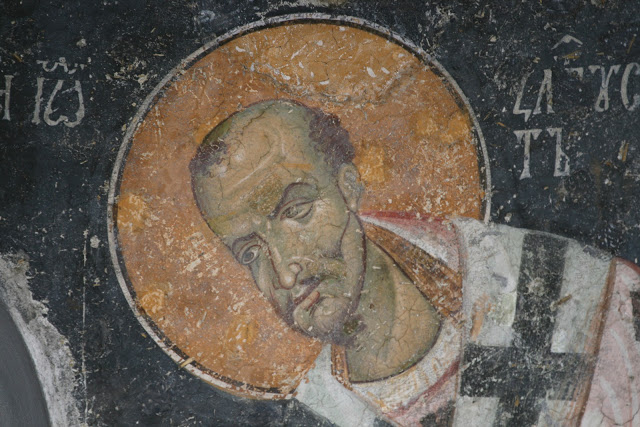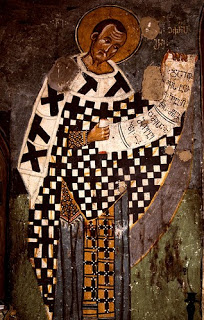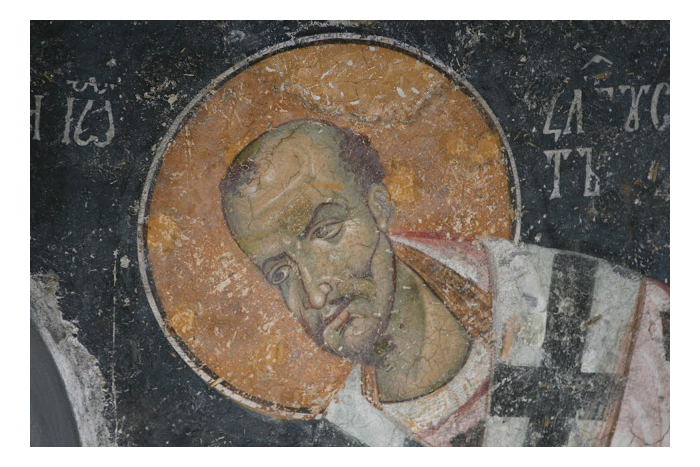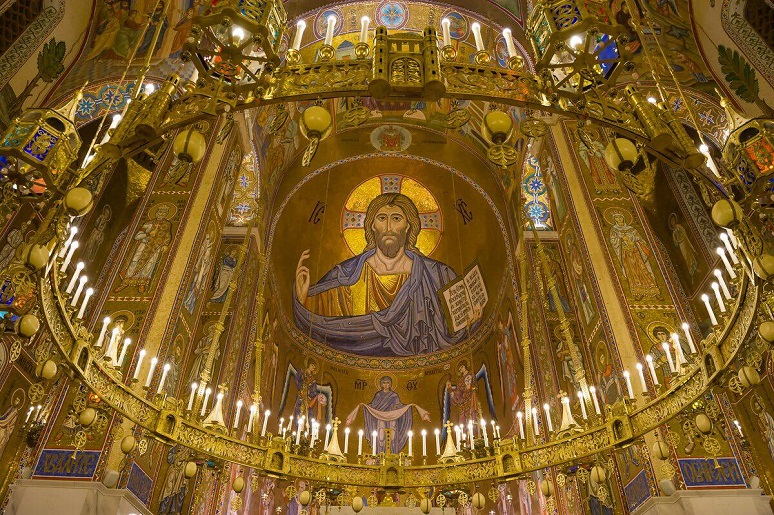
As a liturgical artist, as someone who makes expensive objects to furnish the Church or to be worn by its clergy, there is a homily of St. John Chrysostom I like to keep in the back of my mind. It is a homily on the Gospel of St. Mathew in which he warns us: “Do you want to honor Christ’s body? Then do not scorn him in his nakedness, nor honor him here in the church with silken garments while neglecting him outside where he is cold and naked.”
At first glance one could almost think him a Protestant, an Iconoclast when he says: “What we do here in the church requires a pure heart, not special garments” Or “Give him the honour prescribed in his law by giving your riches to the poor. For God does not want golden vessels but golden hearts.”
I love this homily. Our father among the saints has the mind of Scripture, as his homily repeats that structure we find so often in the Bible. It is the voice of God in the prophets saying: “Stop bringing meaningless offerings! Your incense is detestable to me.” It is the pleading of the Psalmist who Cries out: “You do not delight in sacrifice, or I would bring it; you do not take pleasure in burnt offerings. My sacrifice, O God, is a broken spirit; a broken and contrite heart you, God, will not despise.”
 As I have expounded in my Recovery of the Arts series, we find St. John using a structure of center and periphery, treating the arts as “garments” that are contrasted to the “heart”. He warns us to mind our hearts, to remember that the first fruit of our attachment to Christ is not a beautiful church or a beautiful liturgy, it is love. It is wonderfully humbling to keep this in mind. As a person who spends most of his time making objects for the faithful, one can easily believe one is somehow special or more “spiritual” because of this liturgical occupation… This humbling reminder is the first reason why I love this homily.
As I have expounded in my Recovery of the Arts series, we find St. John using a structure of center and periphery, treating the arts as “garments” that are contrasted to the “heart”. He warns us to mind our hearts, to remember that the first fruit of our attachment to Christ is not a beautiful church or a beautiful liturgy, it is love. It is wonderfully humbling to keep this in mind. As a person who spends most of his time making objects for the faithful, one can easily believe one is somehow special or more “spiritual” because of this liturgical occupation… This humbling reminder is the first reason why I love this homily.The second reason why I love this homily is that it shows, in a hidden way, the very form of what liturgical art should be. For although it might seem that Chrysostom opposes the liturgical arts to loving our neighbor, to think this would be as much an error as believing that the prophets or the Psalmist oppose the (God given) prescriptions of sacrifice to a broken and contrite heart. Chrysostom is not opposing them to one another, rather he is making the “garment” dependent on the “center” , the outside submit to the inside. He is establishing hierarchy. For just as the psalmist declares that once God has created in me a “pure heart”, only then “…will you delight in the sacrifices of the righteous, in burnt offerings offered whole;” In the same manner, Chrysostom makes sure we understand that he is not “…forbidding (us) to supply these adornments; (he is) urging (us) to provide these other things as well, and indeed to provide them first. No one has ever been accused for not providing ornaments, but for those who neglect their neighbor a hell awaits with an inextinguishable fire and torment.”
And so the liturgical arts must be in two ways a proper participation in the hierarchy 1. First their very existence should submit to the pure heart, to love of neighbor and care for the poor 2. Then in their appearance, the liturgical arts should also be structured though principles of hierarchy and concentric forms so that their experience is a reminder of the heart.

A proper understanding of hierarchy will solve many of the problems that have plagued the history of the Church and will avoid so many of the errors that were made in opposing the outside forms to the inside, of opposing faith to works, of opposing the hidden to the visible, the honor given to God and the honor given to men. It is absolutely true that the lower term of the hierarchy, when seen as an end in itself, when seen as broken away from its master, is a sin. But when the heart is pure, when it is broken and filled with love; then the garment will glimmer and shine with immaculate beauty.




